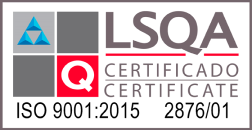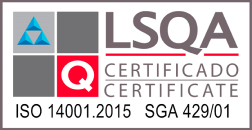Research conducted by the Center for Environmental Technologies of the USM together with the IEK-7-FZJ Institute from Germany and the companies PARTICULAS SpA and TechForYou (T4Y), aims to compare ground measurements of O33 and aerosols in Portillo, Valparaíso Region, which positions the area as the most polluted in Chile by ozone and, in addition, to predict future climate change scenarios.
An unprecedented campaign that is being carried out for the first time on the American continent is being conducted by a team of national and foreign researchers in conjunction with technological companies, whose mission is to launch 20 weather balloons to the stratosphere. These balloons contain telecommunications instruments, meteorological and atmospheric monitoring devices that measure ozone (O3) and aerosols in The Andes mountains.
The scientists, led by Professor Dr. Francisco Cereceda, director of the Center for Environmental Technologies at the Federico Santa María Technical University, aim to compare measurements made on the ground, specifically in the Portillo area, where the NUNATAK-1 – a shelter laboratory of the CETAM-USM – is located, where tropospheric O3 has been measured in real-time and continuously for some years. This will provide greater reliability to the data and thus predict future scenarios linked to climate change, where high concentrations of this gas have already been detected, with levels that exceed those of Santiago and the commune of Los Andes, until recently the place with the highest concentration of O33 in Chile.
The team, also composed of researchers from the Institute of Energy and Climate Research (IEK-7) from Germany and the companies PARTICULAS SpA and TechForYou (T4Y), achieved an unprecedented feat in science and technological development of sensometry under extreme conditions, as there is very little information on this subject in the Andes mountains and in this part of the South American continent.
High concentrations of O3
Tropospheric ozone is a secondary atmospheric pollutant, highly oxidizing and very harmful to the health of the population, flora and fauna, and materials. As explained by Dr. Cereceda – also a professor at the Department of Chemistry at the USM – “ozone is produced by photochemical reactions, involving primary or precursor pollutants, such as nitrogen oxides (NOx) and volatile organic compounds (VOCs), assisted by sunlight acting as a catalyst for its formation”.
He adds that “precursor pollutants are normally present in high concentrations in highly polluted cities, like Santiago, a city that for many years had the highest concentration of ozone in Chile. However, since tropospheric O3 monitoring equipment was installed in the commune of Los Andes in 2017, surprisingly, it now has the highest concentrations in Chile. Motivated by this finding, CETAM-USM in conjunction with the Department of Chemical and Bioprocess Engineering of the University of Santiago de Chile, decided to explore the concentrations of this O33 at the NNTK-1 monitoring station, finding to their great surprise that the concentrations measured there in the middle of the Andes mountains were even higher than in Santiago and in the city of Los Andes”.
Dr. Luis Alonso Díaz, currently General Manager of PARTICULAS SpA, stated that “this finding has also been repeated in other mountainous areas of the world, such as in the Smoky Mountains National Park in the USA, Himalayas, among others”.
To try to explain this curious and complex photochemical phenomenon, CETAM has been conducting numerous experiments and atmospheric monitoring campaigns in the Andes mountains, handling some hypotheses like that the high concentrations of tropospheric O33 could be due to aged ozone coming from the city of Santiago, or that its precursors are the ones that travel carried by the winds to Portillo and there, due to the high UV radiation, react producing more ozone.
It is also thought that the large number of vehicles that travel on the road that connects Chile with Argentina at the Los Libertadores pass, could be generating the necessary precursors for the formation of this pollutant in Portillo, which are added to the NOx and VOCs that are generated in the Santiago basin. This last hypothesis is the one being explored with the cooperation of IEK-7, one of the institutes with the most worldwide experience in the interactions between the stratosphere and the troposphere, belonging to the Foschunszentrum Jülich (FZJ), Germany.
Campaign
The campaign has been in preparation for several years and was able to be carried out between February 25 and will extend until March 8, 2024. It has managed to launch 20 weather balloons with a diameter of 2 meters each, filled with helium, which transport various telecommunications, meteorological, atmospheric, ozone, and aerosol monitoring instruments, among others.
Ozone measurements in the stratosphere are being led by IEK-7, FZJ. In the case of aerosols, thanks to a collaboration between PARTICULAS SpA, T4Y, and CETAM-USM, radiosounding carried out by IEK-7 and real-time atmospheric aerosol monitoring will be included for the first time throughout the journey.
The balloons reach an altitude of 35 Km, surpassing the troposphere, whose limit is 10 Km in altitude, thus allowing the measurement of O33 concentrations and aerosols throughout their journey. These measurements are transmitted by radio frequency to a base of operations equipped with a telecommunications antenna installed at NNTK-1 in Portillo. The data is transmitted in real-time to the base and stored on a PC. Once the maximum height is reached, the balloons burst and the instruments fall, supported by a parachute, in this case, into Argentine territory with prior authorization from the Argentine government, resulting in the irremediable loss of all the instruments, says the director of CETAM-USM.
Unprecedented Initiative
For the director of IEK-7-FZJ, Dr. Martin Riese, “this campaign is absolutely unprecedented, it is the first time that a radiosonde of this kind is conducted in the Andes mountains at this altitude, and according to his data and models, it is unique in the entire continent. This type of information is tremendously necessary to fully understand these phenomena, as there is only information on how they occur in Europe and North America, and in this part of the world, there is very little information. In fact, in parallel, another group of researchers from the same center is conducting a similar Ozone campaign in South Africa, which is on the same parallel as Portillo but on the other side of the world, with the intention of observing if there is any relationship between the phenomena occurring in both places on the planet”.
Meanwhile, Dr. Christian Rolf, also part of the scientific team, indicates that “this allows validating the results of these atmospheric models, thereby giving greater reliability to the results of their application in generating future climate change scenarios or in the generation of extreme weather events, so relevant currently”.
Our Expectations
Better Understanding of Ecological Impacts: The detailed monitoring of ozone and aerosols through radiosondes in the Andes mountains will generate more accurate data on the concentration and distribution of these pollutants. This information is crucial to more precisely assess the ecological risk associated with these substances, allowing for a better understanding of how they affect the health of the local flora and fauna. The ability to measure temporal and spatial variations of ozone and aerosols will provide a solid basis for environmental impact studies and conservation of ecosystems in high mountain areas.
Identification of Critical Areas for Conservation: The data gathered will offer a detailed view of the areas most affected by pollution from ozone and aerosols in the mountains, facilitating the identification of critical areas that require urgent conservation measures. This is especially relevant for the preservation of unique ecosystems and endemic species in the central zone of the Andes mountains, enabling the design of more effective management and conservation strategies that minimize the negative impact of these pollutants.
Foundation for Environmental and Public Health Policies: The results of the monitoring will contribute to the development of more informed environmental and public health policies, aimed at mitigating the harmful effects of ozone and aerosols in the Andes mountains. By providing scientific evidence about the ecological risks for flora and fauna, these data can be used to promote stricter regulations on emissions of ozone precursors, such as in the generation of information for a future and desired secondary air quality standard for tropospheric ozone, as well as to develop continuous monitoring programs and preventive actions that protect these vital ecosystems and the health of nearby communities.
Great Collaboration with Chilean Technological Companies:
Environmental Engineering and Management PARTICULAS SpA, founded in 2014, is dedicated to providing high-quality services and products in engineering and strategic air quality management. Recognized for its commitment to the environment and energy efficiency, this Chilean company collaborates with important national and international entities, aspiring to be a leader in atmospheric pollution control and air quality. With a team of highly specialized experts with doctoral degrees from prestigious universities in the USA and Chile, PARTICULAS focuses on innovative solutions for the well-being of society and environmental protection.
TechForYou (T4Y), born from the union of a professional team passionate about science and technology, addresses various challenges requiring online monitoring, control, and real, robust action. T4Y is oriented towards the development and operation of high-performance technological integrations, supported by agnostic computer systems and image intelligence tools. Their clients value their services, applying them in mining, the environment, transport, smart cities, biotechnology, agroindustry, energy, and applied science. More information go@t4y.cl











